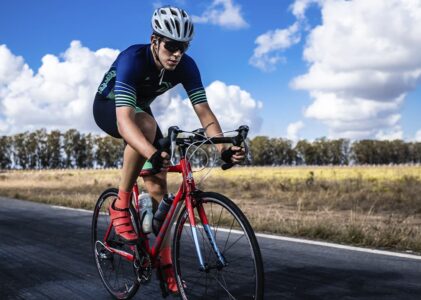Hardly anyone would believe that you can radically improve your athletic performance by doing nothing. Only by thinking about efficiency. And in vain – it is a simple and very easy way to train without the burning pain in the muscles after intervals or endless repetitions on lifts. All you have to do is think about the effectiveness of your actions and constantly evaluate what you’re doing and how you’re doing it on the bike. On a daily basis. Tomorrow, on your way to work, focus your eyes on what lies far ahead of you. When you see a difficulty, adjust your trajectory and go around a potentially problematic spot long before you hit it. That’s what efficiency development is all about.
Whatever you’re doing, from cleaning the house to cooking dinner, everything can be done more logically and efficiently. It will save you dozens of minutes every day, allow you to spend more time on the bike. And the new way of thinking efficiently will quietly become applied to you at the races.
- Look ahead. The habit of looking 15 meters ahead gives you the ability to anticipate the future. Choose the best trajectory and tactics before you approach a difficult section. By moving your gaze forward along the course, you will eliminate unpleasant surprises.
- Loosen your grip. A tight grip on the handlebars on uneven terrain robs you of balance and maneuverability. It blocks your shoulders, makes you strain your upper body more and sucks your strength unnoticeably. Relax your hands and rely on the tenacity of just your thumbs.
- Remain relaxed. Allow your entire torso to absorb and dissipate the shock loads and muscle tension from your arms and legs. By staying flexible and relaxed, you’ll get used to controlling the bike all the time with light, unobtrusive movements. By keeping your balance, you can ride serious obstacles at higher speeds.
- Lift your elbows. Your body will automatically bend, into a more aggressive, springy position and your head will be strictly above the axis of the handlebar tube. Your body will cushion the bumps and you’ll gain the ability to quickly match your cornering forces. You just have to keep your elbows slightly elevated at all times.
- Fewer unnecessary movements. Stay focused. Nodding your head slightly or swinging your shoulders slightly is not forcing yourself to pedal rhythmically, but you are wasting your energy! It’s better to concentrate on the rhythm of your breathing; this will help keep your pedaling pace steady.
- Spin. In 15 seconds your knee will go up 20 times. This corresponds to a pedaling rate of 80 revolutions per minute. Remember this feeling and try to maintain this rate, checking periodically with a stopwatch or bike computer. Pedaling slowly takes more effort. It takes more stamina to pedal at high speeds.
- Pedal efficiently. Properly pedal at 80 RPM, expending as little effort as possible. “Shuffle” backward, as if rounding a turn with each pedal. At the top of the turn, push your foot forward. Don’t spread your knees apart.
- Relax your shoulders on the lift. The main thing is to resist the urge to tense your torso when you feel every muscle in your legs tense. The right thing to do would be to concentrate on the smoothness of the legs, not wasting energy by straining your shoulders and arms.
- Make better use of the gears. Change gears immediately to keep a constant frequency of pedaling, rather than adapting to your chosen gear. Look ahead, read the terrain, and shift the chain to a smaller sprocket long before the others start “ripping the chains” in the steep climb just to keep from falling off to the side.
- Breathe. You won’t have trouble exhaling more intensely. In return, your lungs will swallow more fresh air. When facing hard landings or struggling for traction on a steep climb – keep breathing rhythmically. Your legs noticeably lose strength when you “catch your breath” out of fear.

